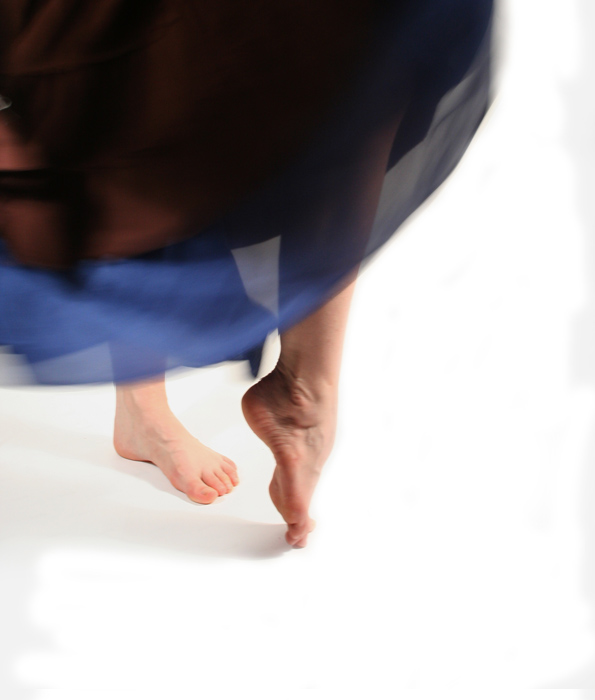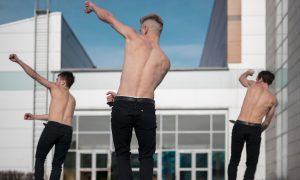What questions do you have relating to dance training, performing or teaching?
As dancers, in a complex industry, we have many questions and are eager for advice. Dance Informa has just launched a new column – Dance Clinic– where you can fire your questions at a leading dance expert.
Doc Dance
Doc Dance has danced with one of the world’s leading ballet companies, holds a Bachelor of Physical Education, a Diploma in Dance and a Graduate Diploma of Education amongst many qualifications and achievements. A certified dance educator with a long history in the industry, Doc Dance has enjoyed a successful career in ballet, musical theatre and variety shows. Doc Dance is a University Lecturer, being invited all over the world to speak and to conduct master classes, and has now joined the Dance Informa team to help our readers achieve their goals.
Your Questions…
Hi Doc Dance,
I have a lovely student who is really good at most things but I am having trouble with her pirouettes, especially en dehors. She keeps falling off demi pointe, what can I do? Please help!
Pirouettes are often a big problem and there could be several reasons why she isn’t turning. In general there are 5 main issues with pirouettes and in no particular order they are:
1) The pelvis – it is too often tilted forward, resulting in a very arched back, restricting turn out and causing postural problems.
2) Weight placement – is generally too far back or not over the supporting foot.
3) Head rotation or extension – either the head is restricted in its ability to turn naturally to either side, or the trapezius muscles are restricting the neck to allow the head to move freely for spotting.
4) Arms – are not co-coordinating correctly to enable the turn to work. They are too ballistic or “thrown” around in order to get more force, the range of arm motion is not enough or the arms are held too stiffly.
5) Toe flexion – is inadequate. Feet need to be tested for ROM (range of motion) as inadequate toe flexion can result in a student constantly falling off demi pointe. It is sadly a very common problem but few teachers are even aware of what it is and or how to address it.
Hi Doc Dance,
We have a 12 year old son who loves classical ballet but he goes to a school with female teachers and only two other boys, both who are much younger than him. Should he be going to a school where there are other boys his age and/or does he need a male teacher at some stage?
Do you need other males in the classroom? Not necessarily if you have a good teacher and the teacher knows and can pass on the masculine attributes that all boys need. Correct training is vital for good musculature and physiological development, but on top of this the young dancer needs to have feeling, expression and artistry all linked to the male style, not the female. Having other boys in the class can help, but is not vital if he is trained well.
We learn to dance by observation, copying and repetition with the emphasis on repetition and the general problem with boys in a class of all girls with a female teacher is:
The teacher generally shows the soft qualities needed for girls (the soft wrists, the sliightly broken arabesque line in the elbow, romantic shape and positioning etc) with often less emphasis on jumps and turns. Henceforth the boy simply follows the teacher’s demonstration or watches the girls to copy and learn, with the result often being a slightly “feminine” style or technique developed by the boy. He can still have good training but simply look too “soft”.
This can be very hard to correct. It is easier in most cases to address technical, physiological or bio mechanical concerns than it is to correct style, and most importantly arms (the most problematic issue in dance). A good male teacher should address these issues knowing what is needed from the male point of view.
The other advantage of male teachers is that they generally address the class needs for boys with the jumping, turning, beating, tricks and style involvement required by them.
The other huge issue with boys in training is the need for abdominal, deltoidius, pectoralis, thoracic and quadricept strength in relation to lifting and pas de deux skills. Pas de deux training for boys is, and should be, what pointe is to girls – vital.
So yes, in 99.9% of boys’ training in classical ballet a male teacher at some stage of early training has advantages. If your teacher has your son’s best interests at heart then she should be aware that she might not have the skills to teach him everything he needs as he develops. Simply going to another school where there are other boys might not necessarily be the answer. Talk to your son’s teacher and ask her to suggest a male teacher for a class once a week. Hopefully she will encourage your son to attend a class with a skilled male instructor, whilst continuing his classes with her also. Please be up front and honest with his current teacher and speak with her before pursuing this.
Do you have a dance question?
Email you questions to info@danceinforma.com with the Subject: Dance Clinic
You may find your answers in the next edition!
The opinions expressed in this article are not necessarily those of Dance Informa Pty Ltd or Dance News International LLC, its directors and employees. The Dance Clinic column is simply provided to give helpful advice and feedback to dancers, teachers and parents, but should not be the only resource used by readers to make decisions about their training/dancing or professional practice.















